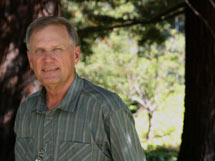
Handy Links
SLAC News Center
SLAC Today
- Subscribe
- Archives: Feb 2006-May 20, 2011
- Archives: May 23, 2011 and later
- Submit Feedback or Story Ideas
- About SLAC Today
SLAC News
Lab News
- Interactions
- Lightsources.org
- ILC NewsLine
- Int'l Science Grid This Week
- Fermilab Today
- Berkeley Lab News
- @brookhaven TODAY
- DOE Pulse
- CERN Courier
- DESY inForm
- US / LHC
SLAC Links
- Emergency
- Safety
- Policy Repository
- Site Entry Form

- Site Maps
- M & O Review
- Computing Status & Calendar
- SLAC Colloquium
- SLACspeak
- SLACspace
- SLAC Logo
- Café Menu
- Flea Market
- Web E-mail
- Marguerite Shuttle
- Discount Commuter Passes
-
Award Reporting Form
- SPIRES
- SciDoc
- Activity Groups
- Library
Stanford
Around the Bay
LDRD Program Encourages Innovation
The SLAC executive council has received the recommendations for the top Laboratory Directed Research and Development projects, moving the LDRD process one step closer to distribution of project funds October 1. The executive council will evaluate the proposals and pass their recommendations on to lab Director Persis Drell next month.
Directing $4.5 million in Department of Energy research funds to top-ranked project proposals, the LDRD review process was designed to promote innovative research at SLAC. The LDRD funds are given only to new research ideas, and cannot go to established research programs. According to Persis, the process helps ensure that SLAC is actively engaged in cutting-edge research without departing from the lab agenda.
"The LDRD program enables the laboratory to attract and retain highly qualified scientists and to support their efforts to carry out world-leading research," Persis said. "It encourages innovation, creativity, originality and quality in order to maintain the laboratory's research activities and staff at the forefront of science."
Forty-six research proposals were submitted for consideration following the call for LDRD proposals last April. In June, the submissions were reviewed by two panels of scientists and faculty, including eight from SLAC and three from Lawrence Berkley National Laboratory. The panels rated each based on quality of science and relevance to the lab agenda.
The executive council will meet throughout August to determine which proposals are the most promising. At the end of the month, Persis will review the top candidates, approve the set of projects for the 2010 fiscal year and request concurrence from the DOE Site Office. Successful proposals will be announced in September.
While the LDRD process has been in place for many years in other DOE labs, this is SLAC's second year conducting the reviews. Previously, funds were distributed by the lab directorate without a formal evaluation process. LDRD Program Manager Stephen Williams said that the competitive LDRD program helps ensure that the lab continues to explore new avenues of research.
"The whole idea of the LDRD program is to seed some money that could lead to the expansion of the laboratory's programs," Williams said. "The program really allows the creative juices to flow and to get funded."
According to SLAC Physicist Ingolf Lindau, who chaired one of the LDRD review panels, the program has been effective in promoting new areas of research.
"If you look at some other labs where this has been in place, a lot of new things have come out," Lindau said. "I think it is a very good move."
The call for 2011 proposals will begin early 2010. For more information on submitting proposals, visit the LDRD Web site.
—Nicholas Bock
SLAC Today, July 28, 2009
